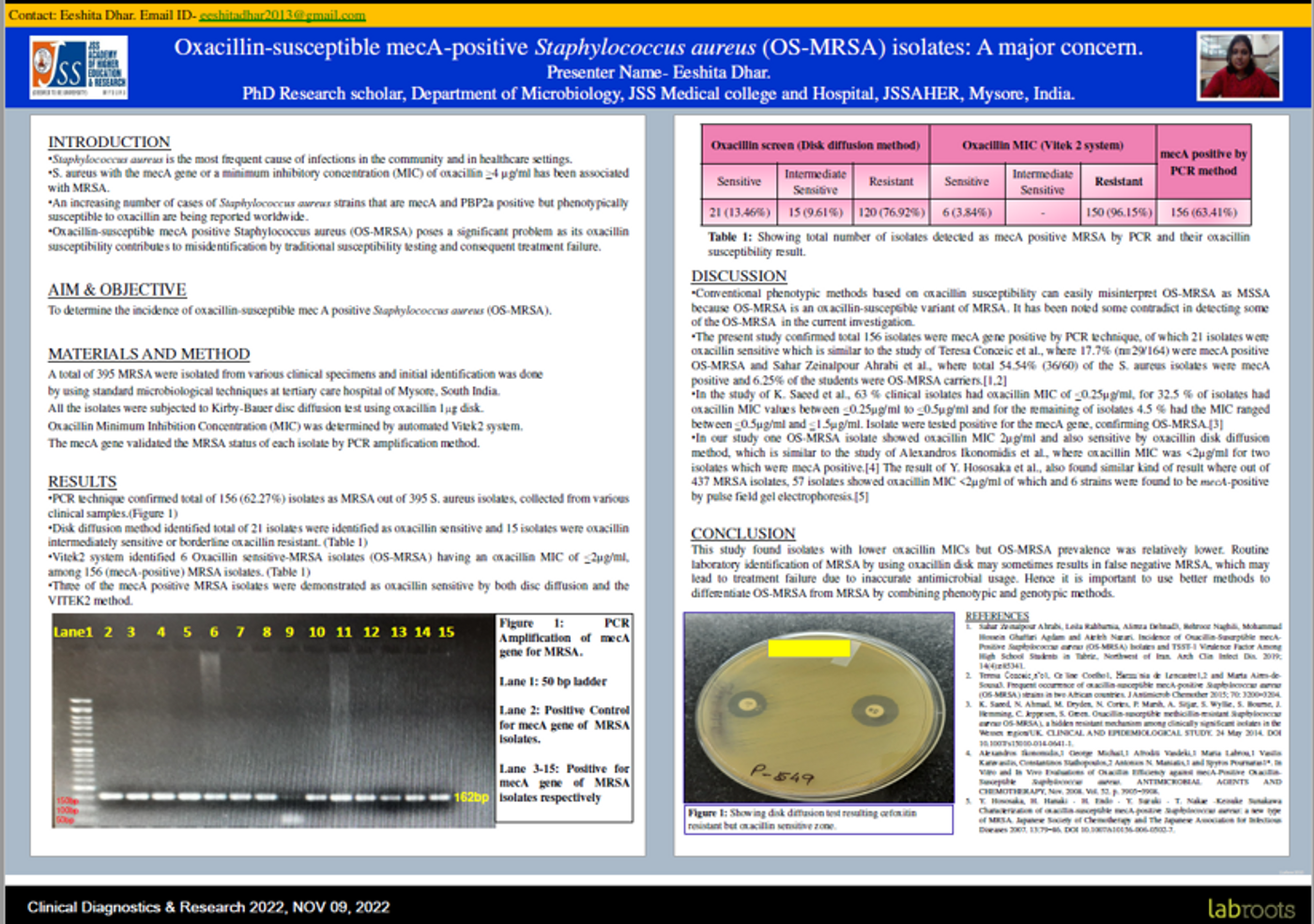Labroots 2022 Clinical Diagnostics & Research Event Poster Winner: Eeshita Dhar
Labroots’ virtual events are a fantastic way to network and learn about the work of other researchers in your field. These events feature participants from around the world who can showcase their research for free in a virtual poster format. At this year’s Clinical Diagnostics & Research Virtual Week (now available to view On-Demand), Labroots highlighted an extraordinary study involving Staphylococcus aureus (OS-MSRA). This unique work comes from Eeshita Dhar, who is a Medical Microbiology and Bacteriology PhD student at JSS University in Mysore, India.
(To see the full poster in detail, check out the 2022 Clinical Diagnostics & Research Virtual Week On-Demand)
Dhar’s poster study examined the increasing number of worldwide cases of Staphylococcus aureus strains which are mecA and PBP2a positive while also being phenotypically impressionable to oxacillin. The study found a lower common occurrence of OS-MRSA while MRSA isolates also had lower oxacillin MICs.
Dhar told Labroots that Staphylococcus aureus treatment failure could result from low sensitivity testing methods and the introduction of a highly resistant subspecies from both incorrect identification in the lab and ill-suited antimicrobial usage.
Dhar stressed the importance of examining detection methods for Staphylococcus aureus isolates that might have MRSA to better determine the difference between OS-MRSA and MRSA.
“Although the extensively used Vitek2 system's capacity to generate findings faster than other methods, it has been noted some contradictions in detecting some of the OS-MRSA in the current investigation,” said Dhar. “However, extra vigilance and confirmatory testing for oxacillin susceptible isolates should be employed in clinical practice due to the incidence of OS-MRSA in the oxacillin susceptible population.”
To follow Eeshita Dhar’s research and career, and to connect with her, check out their LinkedIn, Academia, and ResearchGate profiles.









